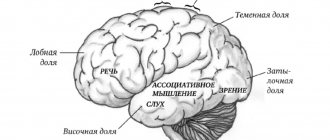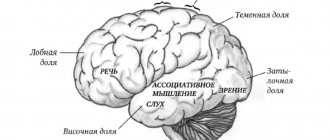Getting to know one person about another is always accompanied by an emotional assessment of the partner, an attempt to understand his actions, forecasting changes in his behavior and modeling his own behavior. Since at least two people participate in this process and each of them is an active subject, in building an interaction strategy, each must take into account not only the motives and needs of the other, but also his understanding of the partner’s motives and needs. The process of interpersonal perception is also called social perception.
The mechanism of interpersonal perception is the way in which a person interprets and evaluates another. There can be quite a lot of such methods. Today we will look at the basic mechanisms of interpersonal perception: identification, empathy, egocentrism, attraction, reflection, stereotype and causal attribution.
Mechanisms and effects of interpersonal perception
— Where does communication begin? Of course, “at first sight,” that is, communication begins with observing the interlocutor, his appearance, voice, and manner of behavior. Psychologists say in this regard that one person perceives another. Effective communication is impossible without correct perception, assessment and mutual understanding of partners. Now we will talk about what influences our perception of other people, what are the mechanisms of interpersonal perception. Let us analyze how perception effects that arise during communication can cause errors in assessing the person with whom we are communicating.
So, people’s cognition and understanding of others and themselves occurs in accordance with the psychological mechanisms of perception. Let's consider these mechanisms:
1) Identification
is a way of understanding another person through conscious or unconscious likening oneself to another. Identification is the process of almost complete identification of a person with an interlocutor during communication.
(This helps, figuratively speaking, to “get into the shoes” of another person, to feel, understand and experience everything that he feels, understands and experiences).
Examples.
A perception mechanism close to identification is empathy.
This is not a rational understanding of the problems of another person, but the ability to have deep emotional contact and empathy for another person, helping to better understand him and respond to his needs and problems. This perception mechanism is most desirable both in communication with colleagues and in communication with patients.
2) Reflection
- this is the process of logical analysis of the problems, actions and states of the interlocutor, leading to certain generalizations and conclusions about the person. Reflection also means a person’s ability to understand how he is perceived by his communication partner. Examples.
3) Stereotyping
is a way of understanding another person by classifying forms of behavior and interpreting their causes by relating them to already known social patterns. A stereotype is a formed image of a person that we use as a stamp. A stereotype is formed on the basis of a generalization of personal experience and information from books and films. At the same time, knowledge can be not only questionable, but also completely erroneous. Examples.
Meanwhile, the stereotypes formed on the basis of this knowledge are very persistent and popular. So, without hesitation, we talk about the precision of a mathematician, the discipline of a military man. That all businessmen are speculators, and all officials are bureaucrats.
Stereotypical perception is enhanced by good or bad health and mood. So, when you feel unwell, people and events are perceived in a more negative light.
By studying the processes of perception, psychologists have identified typical distortions of ideas about another person. They are called effects.
"Halo effect"
" This effect is manifested in the fact that at the beginning of acquaintance, the general impression of a person leads to an overestimation of unknown qualities: the general favorable impression left by a person leads the subject to positive assessments of those qualities that are not given in perception and therefore not observable. At the same time, a general unfavorable impression gives rise to correspondingly negative evaluations. Thus, the halo prevents one from seeing the actual features and manifestations of the object of perception.
"Projection Effect".
The essence of this effect is manifested in the fact that we tend to attribute our advantages to a pleasant interlocutor, and disadvantages to an unpleasant one.
The effect of “primacy and novelty”
(First and Second Order Effect) This effect appears when we are faced with conflicting information about a person. If we are dealing with a stranger, then we tend to trust more the information that came first. When communicating with a person we know well, we tend to give preference to the information that was received most recently.
— Of course, no one can completely avoid mistakes, but we can understand the peculiarities of perception and, knowing about possible distortions, learn to correct our mistakes.
If you are the author of this text and believe that your copyright is being violated or do not want the text to be published on the ForPsy.ru website, send a link to the article and a removal request:
Types of empathy
Empathic experiences can be adequate and inadequate. For example, someone else’s grief causes sadness for one, and joy for another.
In addition, empathy can be:
- Emotional. It is based on the mechanism of projection and imitation of the effective and motor reactions of the interlocutor.
- Cognitive. Based on intellectual processes.
- Predicative. Expresses a person’s ability to predict the reactions of an interlocutor in a given situation.
An important form of empathy is empathy – the experience by one individual of feelings, emotions and states experienced by another. This happens through identification with the interlocutor and sympathy for him.
Technology of perception development
Perception creates a picture of reality based on the activity of an entire system of brain analyzers. The process of perception is physiological. Soviet psychologists L. Vygotsky and A. Zaporozhets talk about motor skills and vision as important factors in the development of perception. Eye movement plays an important role in the development of visual perception.
A fixed eye cannot perceive objects as a whole. With kinesthetic perception, connections arise, including space and time. With this type of perception, the reverse process occurs, providing control over the hands, which perform a variety of actions: from micro-movements to modeling.
For a person, the first significant changes in the perception of the world and perceptual actions occur in the first years of life. One of the decisive roles is played by sensory perception; from childhood, the accumulation of ideas about the color palette, shape, properties and size of surrounding objects begins.
Development technologies can be very diverse. Educational games that bring actions to automaticity, for example, comparing quantities through game manipulations, in which new information is learned. Gradually, the comparison of figures turns into visual perception, and the movements of the hands become more complex, and the sense of touch is involved.
Active search actions and the formation of connections between vision, hearing and touch make it possible to perceive complex signals, distinguish them, build connections, recognize and interpret.
Thus, not only is perceptual development important in its own right, but it is also an example of behavioral and neural plasticity—powerful mechanisms that can support developmental changes in many areas, beginning in early life.
Mechanisms of social perception
The tools used by social perception ensure the establishment of communication between individuals and consist of the following concepts:
- Identification;
- Empathy;
- Attraction;
- Reflection;
- Stereotyping;
- Causal attribution.
The identification method consists in the fact that the psychologist tries to put himself in the place of the interlocutor. To get to know a person, you need to understand his scale of values, norms of behavior, habits and taste preferences. According to this method of social perception, a person behaves in the way that, in his opinion, his interlocutor might behave.
Empathy is empathy for another person. Copying the emotional mood of the interlocutor. Only by finding an emotional response can you get a correct idea of what is going on in the soul of your interlocutor.
Attraction (attraction) in the concept of social perception is considered as a special form of cognition of a partner with the formation of a stable feeling for him. This understanding may take the form of friendship or love.
Reflection is awareness of oneself in the eyes of the interlocutor. When conducting a conversation, a person seems to see himself from the partner’s side. What the other person thinks about him and what qualities he gives him. Self-knowledge in the concept of social perception is impossible without openness to other people.
Causal attribution from the words “cause” - cause and “attribute” - label. A person is endowed with qualities according to his actions. Social perception determines the following types of causal attribution:
- Personal – when the reason comes from the person who committed this or that act;
- Objective – if the cause of the action was the object (subject) towards which this or that action was directed;
- Circumstantial – the conditions under which a particular act was committed.
In the process of research, according to social perception, patterns were identified that influence the formation of causal attribution. As a rule, a person attributes success only to himself, and failure to others, or to circumstances that, alas, were not in his favor.
When determining the severity of an action directed against a person, the victim ignores objective and detailed causal attribution, taking into account only the personal component. An important role in perception is played by the person’s attitude or information regarding the perceived subject
This was proven by Bodalev's experiment, which showed a photograph of the same person to two different social groups. Some said that before them was a notorious criminal, others identified him as the greatest scientist.
A social stereotype is the perception of an interlocutor based on personal life experience. If a person belongs to any social group, he is perceived as part of a certain community, with all its qualities. A clerk is perceived differently than a plumber. Social perception shares the following types of stereotypes:
- Ethnic;
- Professional;
- Gender;
- Age.
When people from different social groups communicate, contradictions may arise, which are smoothed out when solving common problems.
Stereotype
This is a very important and quite capacious mechanism of interpersonal perception. A stereotype in the context of interpersonal attraction is the process of forming an opinion about a person based on personal prejudices (stereotypes).
In 1922, to denote ideas associated with inaccuracy and lies, V. Limpan introduced the term “social stereotype.” As a rule, the formation of stable patterns of any social object occurs unnoticed even by the individual himself.
There is an opinion that it is precisely because of poor meaningfulness that stereotypes are firmly entrenched in the form of stable standards and gain power over people. A stereotype arises in conditions of lack of information or is the fruit of a generalization of an individual’s own experience. The experience is often supplemented by information obtained from cinema, literature and other sources.
Thanks to a stereotype, a person can quickly and, as a rule, reliably, simplify the social environment, organize it into certain standards and categories, make it more understandable and predictable. The cognitive basis of stereotyping is formed by processes such as limitation, selection, and categorization of a large flow of social information. As for the motivational basis of this mechanism, it is formed by processes of evaluative popularization in favor of one or another group, which give a person a sense of belonging and security.
Stereotype functions:
- Selection of information.
- Formation and support of a positive self-image.
- Creation and support of a group ideology that justifies and explains the behavior of the group.
- Formation and support of a positive image of “We”.
Thus, stereotypes are regulators of social relations. Their main features are: economy of thinking, justification of one’s own behavior, satisfaction of aggressive tendencies, stability and release of group tension.
Types and levels of communication.
The following types of communication are distinguished:
A) Intrapersonal communication
. This is a person’s internal dialogue with himself, thinking about problems, various issues, analyzing situations, making plans, etc.
B) Interpersonal communication
. This is communication between two or more people. Includes all the variety of forms and styles of communication.
B) Social communication
. This is communication between a person and a group of people, a team, or a large audience.
— You have observed more than once that in different life situations you face different goals and your different personal qualities are revealed. Depending on the situation, you choose one or another style (level) of communication.
The following levels (styles) of communication are distinguished:
A) Primitive level
At this level of communication, the other person is assessed from the point of view of need or unnecessaryness, usefulness or uselessness. When it is “necessary” or “useful,” they come into contact with the person; when it is “unnecessary,” they do not enter into contact or rudely push him away if he interferes with the achievement of any goal. In this case, the person is actually used as a thing, since after obtaining the desired result, interest in him, as a rule, quickly disappears (when communicating with a patient, this type of communication is unacceptable).
B) Manipulative level.
This level of communication is close to primitive, since it is also aimed at obtaining some benefit from the interlocutor. At the same time, the true goal is hidden from the person in every possible way. In such communication, a wide variety of methods of psychological influence on and control of a person are actively used. For example: flattery, intimidation, showing affection, deception, “showing off”, etc.
7 pages, 3014 words
Forms of communication between people, expression of feelings and emotions, manifestation of friendship and love
... is the main determining factor in communication between people, representing a set of certain codes formed by the cultural baggage of a given level, facilitating or complicating communication, but always determining ...
This type of communication is also unacceptable during interaction with the patient.
C) Formal role level.
At this level of communication, each participant acts strictly in accordance with his social role and position. It actually does not take into account individual personal qualities, the inner world of a person, his problems, etc. n. This style of communication is permissible only in rare extreme conditions, when the patient needs to provide urgent assistance and there is no opportunity to study his personality.
D) Business (professional) level.
Business communication occurs among people, as a rule, in connection with their participation in a certain joint activity and has the goal of achieving a common result. Therefore, at this level of communication, the individual characteristics of the interlocutor’s personality are taken into account, but the interests of the matter prevail, and even possible differences in views or opinions, as a rule, fade into the background. This style of communication occurs quite often between people.
D) Friendly level.
This level of communication is characterized by maximum openness of people to each other, sincerity, and trust; emotional experience for another person, sympathy for his problems, as well as readiness for mutual support and mutual assistance. This level of communication is acceptable when communicating with colleagues and close friends.
E) Communication at the level of “mask contact”.
This is a level of formal communication in which the interlocutors do not have the need and desire for a deep understanding of the other person, when a set of standard socio-psychological “masks” is used: politeness, compassion, respect, rigor, etc. In this case, the “mask” means a certain set of gestures, facial expressions, words, intonations. All this allows a person, firstly, to hide his true attitude towards his interlocutor; secondly, to protect yourself from the unwanted intrusion of others into your inner world, and thirdly, if necessary, to “smooth out rough edges” in relationships between people.
7 pages, 3353 words
Higir. How to find out secret thoughts by gestures
... the situation would be more suitable for you with gestures of open hands and unbuttoned clothes. Gestures of preening and courtship Research conducted ... in courtship, being the main “litmus test”. Communication with a sexually attractive partner makes the pupils involuntarily... in the functioning of the entire management apparatus, the cultural level of the manager, his style of activity, which should...
G) Secular level
This level is characterized by superficiality and pointlessness. People exchange phrases, words, signs of attention in strict accordance with generally accepted rules in a given society
Methods of influence in the process of communication
Communication includes certain ways in which individuals influence each other; the main ones are infection, suggestion, imitation.
Contagion is an unconscious, involuntary exposure of an individual to certain mental states. Infection acts as a form of spontaneously manifesting internal mechanism of human behavior. The mechanism of socio-psychological infection comes down to the effect of multiple mutual reinforcement of the emotional effects of people communicating with each other.
A special situation in which the impact through infection is enhanced is a situation of panic. Panic arises among a lot of people as a certain emotional state. The immediate cause of panic is the appearance of any news that can cause a kind of shock.
Suggestion is the purposeful, unreasoned influence of one person on another or on a group. With suggestion, an influence is exerted on another, based on the uncritical perception of a message or information. Unlike infection, which is, as a rule, non-verbal in nature (dancing, games, music, emotions, etc.), suggestion, on the contrary, is verbal in nature, that is, carried out through a speech message. Suggestion acts with particular force on impressionable people who, at the same time, do not have a sufficiently developed ability for independent logical thinking, do not have firm life principles and beliefs, and are unsure of themselves. Imitation as a method of influence is manifested in following an example or model through its reproduction. Imitation is of particular importance in the process of human mental development.
Audience effect
A person does the same things differently when alone and in the presence of other people. Moreover, observers can influence both positively and negatively. For example, a person will perform better at work that is familiar to him and perform worse at new assignments when someone else is near him.
Psychologist Robert Zajonc believed that observers cause arousal because their reaction to a person’s actions is unpredictable. When a person does what he knows and knows, it is easier for him to cope with psychological stress and fear of evaluation than if he takes on a completely new unfamiliar task.
Recent Entries
- 1. Features of psychology as a science, its tasks
- Types of student activities
- General concept of intelligence
- General characteristics of a person’s motivational sphere
- Diagnosis of selectivity of attention
- Conflicts as the struggle of animals for vital resources
- Subject and method of pedagogical conflictology
- Dr. Freud and his teachings
- Social ecology is a science and educational subject in the professional training of social work specialists
- Analysis of case studies of therapy
- Development of Russian psychology in the 19th century
- Basic principles and methods of managerial psychology 2
- Coping with difficult life situations
- Guidelines for conducting practical classes in sections 1−3 of the discipline “Psychology”
- in the course "Psychology" 2
Lecture No. 1. Psychology of communication
Man is unthinkable without people.
Goethe
Goal: To study the topic “Communication”. Expand the meaning of the concept of “communication”; consider types and levels of communication. Introduce students to various means of communication, reveal techniques of non-verbal communication
Pay special attention to the mechanisms of interpersonal perception and understanding of people in the process of communication. Give an idea of the main phenomena of interpersonal communication; analyze the reasons leading to distortion of information in the process of people’s perception of each other
Develop skills in interpreting nonverbal means in communication. Develop the ability to better perceive and understand other people in the process of communication.
Plan:
1. The concept of communication.
2. Types and levels of communication.
3. Means of communication.
4. Mechanisms and effects of interpersonal perception.
Empathy
The second mechanism of interpersonal perception is closely related to the first. Empathy is the emotional desire to respond to the problems tormenting another person, to sympathize with him and empathize.
Empathy is also interpreted as:
- Comprehension of the states of another individual.
- A mental process aimed at identifying the experiences of others.
- An action that helps an individual build communication in a special way.
- The ability to penetrate the mental state of another person.
The ability for empathy increases when the interlocutors are similar, as well as when the individual gains life experience. The higher the empathy, the more colorful a person imagines the impact of the same event on the lives of different people, and the more aware he is of the fact that there are different views on life.
An individual prone to empathy can be recognized by the following characteristics:
- Tolerance for other people's emotions.
- The ability to delve into the inner world of your interlocutor without revealing your worldview.
- Adapting your worldview to the worldview of another person in order to achieve mutual understanding.
The essence of interpersonal perception
Interpersonal perception is a side of communication that includes the exchange of information and interaction, which is influenced by such factors: the subject’s activity, expectations, intentions, past experience, situation, and more.
Mechanisms of interpersonal perception
The perception of another person allows the personality to shape itself, because during this the relationship of the personality with the opponent occurs. To achieve the goal, long-term joint activity between them is necessary.
The development of self-awareness through the process of analyzing oneself through another is carried out through the following mechanisms:
- Reflections are rethinking your actions and feelings.
- Causal attribution is the concept of one’s mistakes through the achievements of another.
We are designed in such a way that the process of studying the world around us never ends. New items and technologies appear that need to be analyzed. We meet new people and form a certain opinion about them. The process of introspection and soul-searching continues throughout our lives. We are changing, the structure of the world is changing
All these aspects point to the importance of a correct understanding of everything that surrounds us
I hope this article will be useful to you. If your boss doesn’t like you, then this depends only on the effect of hyper-demandingness, and not on the fact that you have no positive qualities.
Levels and types of perception
There are several levels of perception, which in turn are divided into perception and awareness:
- Detection. The first level at which stimulus detection occurs.
- Discrimination or perception. An image is being formed.
- Identification. The stage of awareness begins, the image stored in memory is compared with the object.
- Identification. In the end, the object is classified and assigned to a group.
Various types of analyzers are involved in the process of perception, but, as a rule, they work in combination.
This:
- visual;
- auditory;
- olfactory;
- tactile;
- taste.
In addition, depending on the object of perception, which has certain reference points, perception is distinguished:
- Time. His perception is not innate and depends on the sum of factors; it is a reflection of reality within the framework of the sequence of occurring phenomena. The perception of time may be biased, for example, under the influence of drugs, which can excite, change or inhibit processes.
- Movements. When stimuli are excited, the retina perceives movement that occurs against some background, homogeneous or not, or in its absence, for example, in the dark. The movement of the eyes is also perceived by the brain as the movement of objects.
- Spaces. The ability to navigate in space is one of the most important qualities of a person when interacting with the external environment. Perception includes the coordinate system of the person himself, how he takes his place in this space, which has relief and direction.
Perception is also classified into voluntary and involuntary. Voluntary or intentional is formed in the form of observation, which, in turn, consists of a person’s experience and knowledge about the object of observation.
Effects of social perception
Certain features that prevent interacting partners from adequately perceiving each other are called social perception effects. These include: halo effect, projection, primacy, novelty, average error.
Interpersonal perception involves mutual assessment by the participants of communicative interaction, but over time there is no change in the evaluative judgments of the partners. This occurs due to natural causes and is called the halo effect. In other words, the once formed judgment of one participant about another does not change, even though new information about the subject of communication accumulates and new experience arises.
The effect of social perception can be observed during the formation of a first impression about an individual, when a general good impression leads to a generally positive evaluation and, conversely, an unfavorable impression provokes a predominance of negative evaluations.
Effects such as primacy and novelty are closely related to such social effects. During the perception of an unfamiliar individual, the primacy effect prevails. The opposite of this effect is the effect of novelty, which consists in the fact that information received last is more significant. The novelty effect works when perceiving a previously familiar individual.
They also distinguish the effect of projection, which is the attribution of one’s own merits to a pleasant interlocutor, and one’s own shortcomings to an unpleasant interlocutor, in other words, to most clearly identify in interlocutors precisely those qualities that are clearly expressed in the perceiving individual. The effect of the average error is expressed in the tendency to soften the assessment of the most pronounced features of the partner towards the average.
The listed effects should be considered as an expression of a special process that accompanies the perception of an individual by an individual. This process is called stereotyping.
Thus, the concept of perception is a reflection of things and situations of reality during their impact on people’s senses. In this case, the age period in which the perceiving individual is located plays an important role.
Gender characteristics of perception
Perception in psychology is the acceptance of people of different sexes and genders, their appearance characteristics, outlook on life, experience and knowledge. The concept of gender describes a person’s status, his social perception; it is a kind of social gender.
Gender stereotypes are widespread in society and are essentially recognized as social norms for both sexes. There is also a division on the emotional level; it is believed that men are more prone to logic and self-organization, while women are exclusively emotional.
At the same time, women now bear on their shoulders building a career, raising children, and running a household. But the distribution of gender roles can also have a negative impact on a man.
Forcing a man to be successful suppresses his personality and leads to depression. A personality must develop individually based on its psychophysiological characteristics. A sense of duty should also not interfere with the development of individual potential.
The role of perception in psychology
Perception in psychology is an important psychological function of cognition. It allows you to determine how a person sees and perceives various things. The psychological mechanisms of social perception can be found above.
It is classified depending on the working organs of perception:
- Visual. This is the perception of the surrounding reality with the help of the organs of vision: recognition of colors, determination of distance, and more.
- Tactile. With the help of hands, many things are recognized and their interaction on the individual. For example, pain makes it clear that high temperatures are harmful to the body.
- Auditory. The auditory perception of the world occurs through the human ear. The human ear allows us to get a complete picture of the world thanks to sounds.
Communication concept.
From the moment of his birth until the end of his life, a person is in the process of constant communication and interaction with other people. Statisticians in some countries have calculated that up to 70% of the time in the lives of most people is occupied by communication processes. In communication, we convey a variety of information to each other; exchange knowledge, opinions, beliefs; declare our goals and interests; We learn practical skills and abilities, as well as moral principles, rules of etiquette and traditions.
However, communication does not always proceed smoothly and successfully. Often we are faced with critical situations: someone did not understand us; we did not understand someone; We spoke to someone too harshly, rudely, although we did not want this. There is no person who has never experienced difficulties in the process of communication in his life. In private life, we have the right to choose those with whom we enjoy communicating, those who appeal to us. However, in the service we are obliged to communicate with those who are there, including people who we don’t like
In this situation, it is very important to be able to learn how to establish contact, since the success of professional activity depends on this skill. Numerous studies by psychologists have proven that there is a direct connection between the quality of communication and the effectiveness of any activity, i.e.
e. almost everything depends on the ability to contact people
5 pages, 2482 words
Mechanisms of person’s perception by person and mutual understanding in the process of communication
… . the way your communication partner sees you. Mechanisms of perception of a person by a person and mutual understanding in the process of communication The idea of another person is closely related to the level of one’s own self-awareness...
— Do you think your future professional activity as a nurse (paramedic) somehow depends on your ability to communicate and achieve mutual understanding?
Even Avicenna, the great physician and thinker of the Middle Ages, spoke about three means of helping a sick person - “the knife, the grass and the word,” thereby emphasizing the importance of the human word, and in fact, the psychology of communication in healing from illness. Any activity is possible only if psychological contact and mutual understanding are established between people
However, we must remember that successful communication is achieved not only by knowledge, techniques and technology. The basis of communication is a sincere, friendly attitude towards a person.
Each of us has an idea of what communication is. Our life is built from it, it lies at the basis of human existence, therefore communication has become the object of socio-psychological analysis. There are many definitions of communication in the literature. We will use the most general concept.
Communication is a complex, multifaceted process of establishing and developing contacts between people, including the exchange of information, the development of a unified interaction strategy, as well as perception, empathy and mutual understanding of each other.
Communication is of great importance in the formation of the human psyche, in the development and establishment of reasonable cultural behavior. Through communication, a person acquires higher cognitive abilities and qualities; through communication, a person turns into a personality (examples - Mowgli children)
Communication is always a two-way process in which all its participants are involved, leading to the mutual connection of people with each other.
The study of the communication process has shown how complex and diverse this phenomenon is. Communication is carried out in the unity of its three functions:
1) Communication function -
manifests itself in the mutual exchange of information between partners in communication, transmission and reception of knowledge, opinions, feelings;
2 pages, 915 words
QUESTION ╣ 25 Communication with peers is the leading activity in adolescence
... In the second half of adolescence, communication with peers turns into an independent activity. A teenager cannot sit at home, ... the code of partnership,” which includes respect for the personal dignity of another person, equality, fidelity, honesty, decency, willingness to come to ... who in their development have not yet reached the level of self-esteem, do not have their own opinion, do not know how ...
2) Interactive feature -
is to organize interpersonal communication. When participants in communication exchange not only knowledge, ideas, but also actions, experiences, deeds;
3) Perceptual function -
manifests itself through people’s perception, understanding and evaluation of each other.
To better understand what communication is, we need to consider in detail its types, levels, features and obstacles.
How empathy is similar to identification
The empathy mechanism has some similarities with the identification mechanism. In both cases, there is a person's ability to see things from another person's point of view. However, empathy, unlike identification, does not imply identifying oneself with the interlocutor. By identifying with a partner, a person accepts his behavior model and builds a similar one. By showing empathy, an individual simply takes into account the interlocutor’s line of behavior, while continuing to build his own behavior independently of him.
Empathy is considered one of the most important professional skills of a psychologist, doctor, teacher and leader. Empathic attention (listening), according to K. Rogers, is a special attitude towards a partner, based on the synthesis of identification and empathy. Inclusion in another person, allowing one to achieve openness of contact, is an identification function. Such “immersion in the interlocutor” in its pure form has negative consequences - the psychologist “gets involved” with the client’s difficulties and begins to suffer from his problems himself. This is where the empathic component comes to the rescue - the ability to distance oneself from the partner’s state. Thus, the combination of such mechanisms as person-to-person identification and empathy allows the psychologist to provide real assistance to clients.








